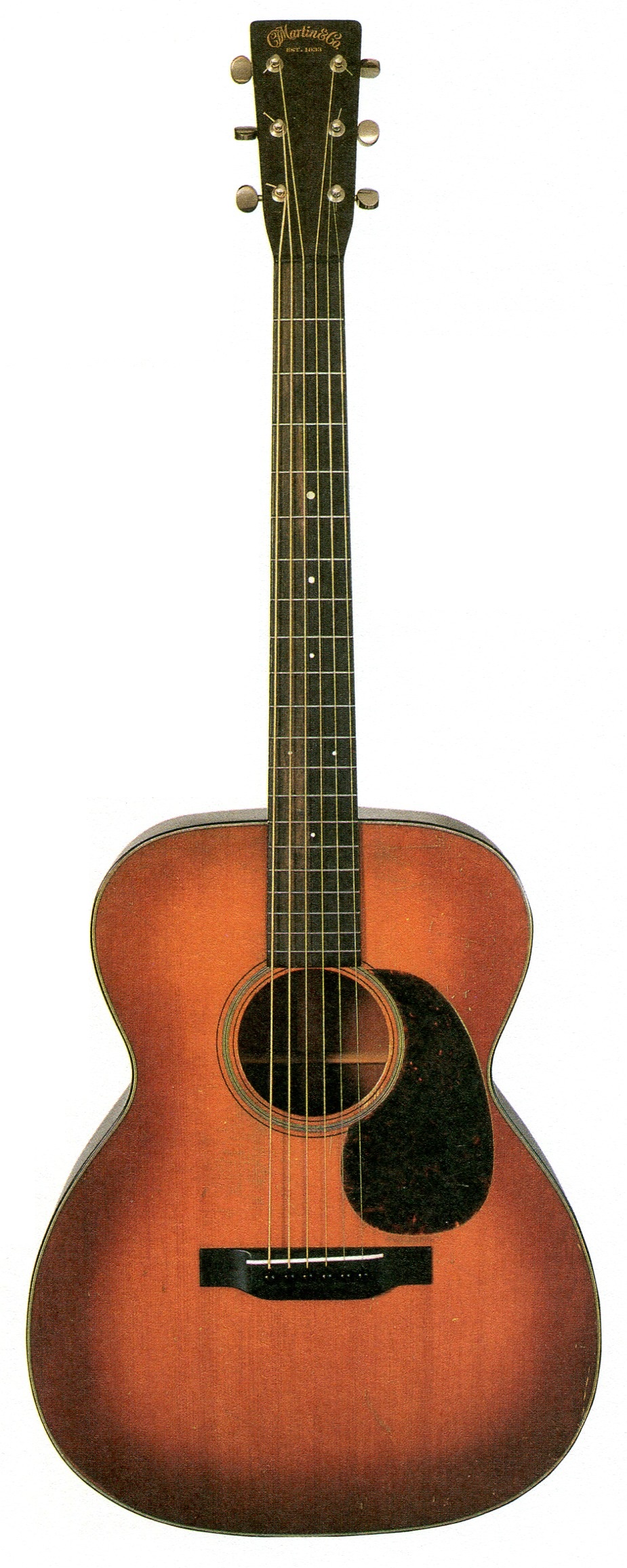Martin OM-18

The standard guitar neck of the 1800s and early 1900s had one octave, or 12 frets, clear of the body, and that is still the standard for classical guitars. However, in the late 1920s, when banjoists began moving to the guitar, the 12-fret neck seemed limiting compared to a banjo, which had all the frets clear of the body. Parry Bechtel, a banjoist who also used a Gibson L-5 archtop with a 14-fret neck, wanted to expand his arsenal to include a 14-fret flat-top.
Martin built him one in 1929, taking it’s largest body size, the 000, and shortening it to leave 14 feets clear. Martin dubbed it OM for Orchestra Model. At the same time, Martin began offering a sunburst finish, sported by this OM-18 from 1932.
The OMs only lasted a short time – ironically, because the 14-fret neck was so well-received that Martin implemented it across the line, making the 000 essentially the same as the OM. The OM was revived in 1990s; it’s 25.4-inch scale delinates it from the modern 000, which has 24.9-inch scale.
